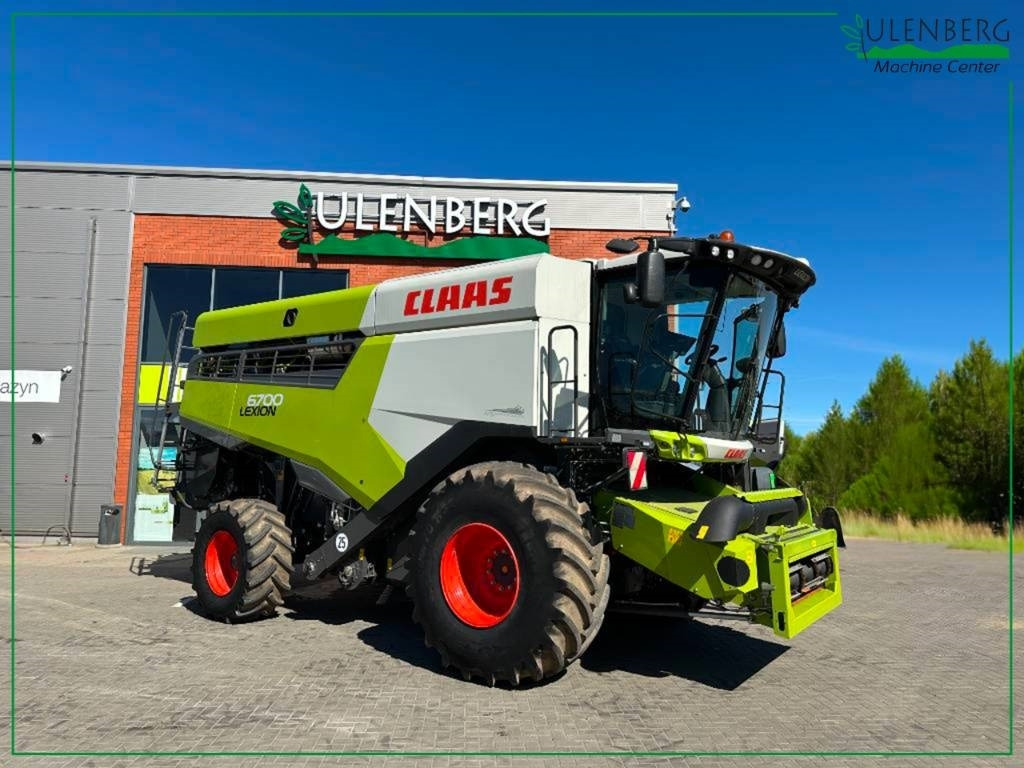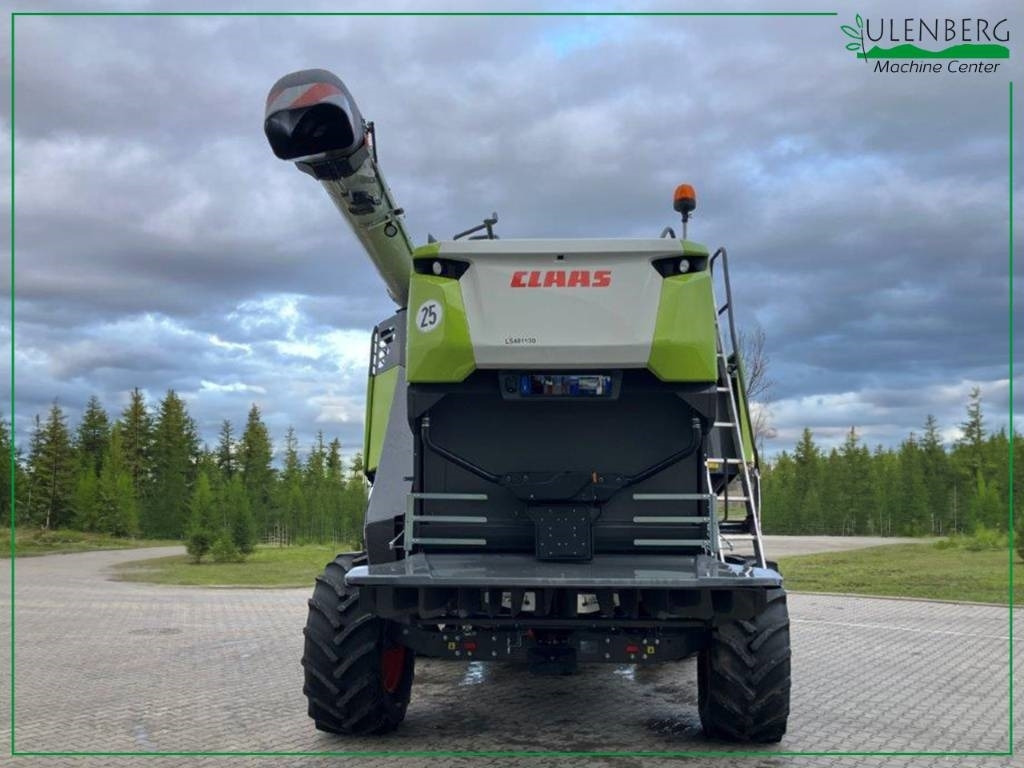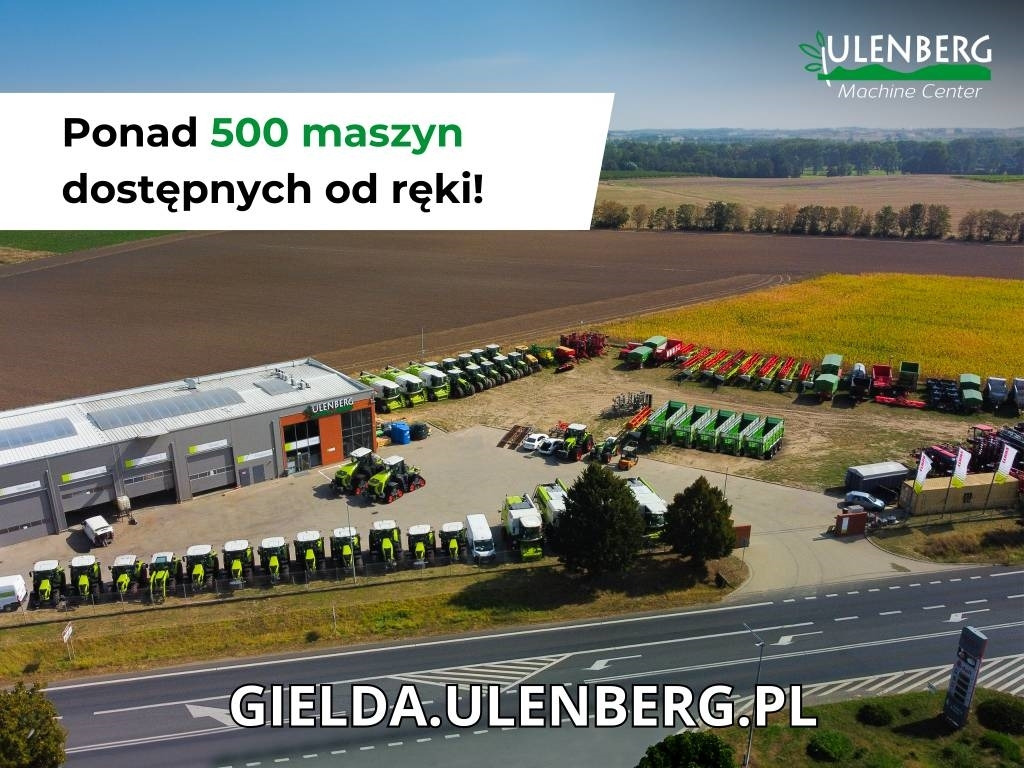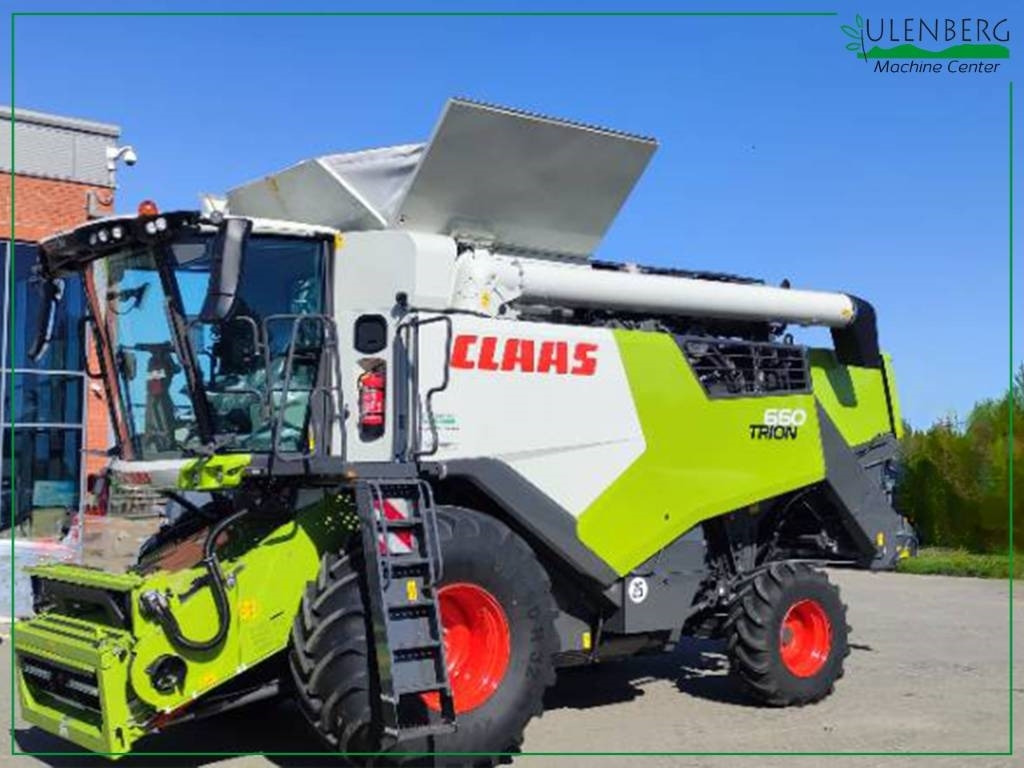CLAAS Lexion 6700, Other Combine harvesters leasing





CLAAS Trion 750
295 000EUR
Price excl. VAT
- ≈ 340 347 USD
- ≈ 251 126 GBP





Claas Trion 530
175 000EUR
- ≈ 201 901 USD
- ≈ 148 973 GBP





Claas COMMANDOR 116 CS RISO





Claas TRION 530 MONTANA
4 million buyers per month search for vehicles and machinery on Truck1.





Claas Lexion 6700TT GPS + V770
245 000EUR
- ≈ 282 661 USD
- ≈ 208 562 GBP





Claas Lexion 6700TT GPS + V930
250 000EUR
- ≈ 288 430 USD
- ≈ 212 819 GBP





Claas 750TT c/w V900 Header
111 573EUR
- ≈ 128 724 USD
- ≈ 94 979 GBP





Claas Lexion 6700 + V770
245 000EUR
- ≈ 282 661 USD
- ≈ 208 562 GBP





Claas Lexion 6700
280 586EUR
- ≈ 323 717 USD
- ≈ 238 856 GBP





CLAAS Trion 730





CLAAS PU 300 HD
7 500EUR
Price excl. VAT
- ≈ 8 652 USD
- ≈ 6 384 GBP





Claas TRION 650 -VARIO 680 -CEMOS AUTOMATIC –CEMIS 1200
265 046EUR
- ≈ 305 788 USD
- ≈ 225 627 GBP





Claas LEXION 6700 -V770-408KM-744mth
239 867EUR
- ≈ 276 739 USD
- ≈ 204 193 GBP





Claas 480/580/770/780
45 000EUR
Price excl. VAT
- ≈ 51 917 USD
- ≈ 38 307 GBP





Claas Evion 430 MAXI
125 786EUR
- ≈ 145 121 USD
- ≈ 107 078 GBP





Claas TRION 650
201 897EUR
- ≈ 232 932 USD
- ≈ 171 870 GBP





CLAAS TRION 750 TT APS HYBRID
359 000EUR
- ≈ 414 185 USD
- ≈ 305 608 GBP





Claas TRION 660
199 621EUR
- ≈ 230 306 USD
- ≈ 169 932 GBP





Claas Orbis 900 Maisgebiss
45 294EUR
Price excl. VAT
- ≈ 52 256 USD
- ≈ 38 557 GBP
As a leading platform for buying and selling farming machinery, Truck1.eu offers a diverse range of combine harvesters designed to meet the needs of the agricultural sector. Whether you're searching for a used combine harvester for sale in Europe or looking to purchase a new piece of equipment, our platform makes it easy to find the right harvesting machine at the right price.
A combine harvester is a versatile piece of machinery used in agriculture to streamline the harvesting process. This machine is tasked with the job of reaping, threshing, and cleaning grain crops in one fell swoop. It's an essential piece of equipment for farmers who need to harvest large quantities of crops such as wheat, corn, barley, and more.
Applications
They are designed to work effectively in a variety of crops and terrains. They can handle everything from flat, even fields to hilly, uneven landscapes. These powerful machines are best suited for large-scale farming operations that require efficient and fast harvesting.
Types of Combine Harvesters
Combine harvesters are categorized into several main types, each with distinct harvesting mechanisms:
- Conventional (Straw Walker) Combines - Traditional design using oscillating straw walkers to separate grain from chaff, ideal for standard cereal crops
- Rotary Combines - Feature rotating cylinders for more aggressive threshing, better suited for high-yield or tough crops
- Hybrid Combines - Combine elements of both conventional and rotary systems for versatile performance across crop types
These different types vary in their capacity, grain handling efficiency, and suitability for particular crops like wheat, corn, or rice.
Key Specifications to Consider
When selecting a combine harvester, these technical specifications significantly impact performance:
- Engine Power (150-600 HP) - Determines harvesting capacity and speed
- Grain Tank Capacity (3,000-12,000 liters) - Affects unloading frequency
- Feeder Housing Width (1.2-2.4 meters) - Influences crop intake rate
- Threshing System Type (Axial-flow, hybrid, or conventional)
- Header Compatibility - Adaptability for grains, corn, rice, etc.
- Terrain Adaptation - Track options, ground clearance, stability
- Fuel Efficiency - Consumption rates (15-40 l/ha)
- Technology Package - GPS, yield monitoring, auto-steering
These factors collectively determine the machine's efficiency across different field conditions and crop types.
Pricing and Market Trends in Europe
The price of combine harvesters in Europe varies from €70,000 for older used models to over €500,000 for new high-end machines. Typical prices for 5-year-old combines range between €120,000-€250,000 depending on size and brand.
Eastern European markets show strong demand for used equipment, where combines can be 15-20% cheaper than in Western Europe. Current market offers include good options like 3-5 year old models in the €150,000-€300,000 range.
Popular Brands and Models
When choosing a harvester, professionals often turn to manufacturers with a proven track record in agricultural machinery. Below are some of the most respected brands in the industry, each known for unique strengths and innovations:
- John Deere – Recognized for its advanced automation technologies and fuel-efficient engines. John Deere combines are known for durability and wide service support across Europe.
- CLAAS – A German brand famous for its precision engineering. CLAAS combines offer high throughput and are particularly efficient in European field conditions.
- New Holland – Offers reliable performance with a focus on operator comfort and intuitive controls. Their harvesters are versatile and well-suited for mixed farming operations.
- Case IH – Known for powerful engines and Axial-Flow technology that ensures gentle crop handling and high grain quality. Popular among large-scale farms.
- Fendt – A premium brand from AGCO Group, valued for its innovative features like VarioDrive transmission and top-tier cab ergonomics.
- Massey Ferguson – Combines solid build quality with simple maintenance and cost-effective operation. Ideal for mid-sized farms seeking performance and value.
Buy Combine Harvesters on Truck1
At Truck1.eu, we connect buyers with verified dealers offering a wide range of combine harvesters. Our advanced search filters allow you to quickly sort through our inventory and find the perfect machine for your needs. If you're not sure what you need, use our "I'm looking for" form and we will get in touch once your desired ad appears online.
FAQ
What factors affect the performance of a combine harvester?
Several factors can impact the performance of a combine harvester, including the type of crop, terrain, and weather conditions. Additionally, the machine's design and maintenance can also play a role in its performance.
What's the difference between a conventional and a rotary combine harvester?
A conventional combine harvester uses a series of straw walkers to separate the grain, while a rotary combine uses a rotating rotor. The choice between the two generally depends on the specific harvesting needs.
Can combine harvesters work in all weather conditions?
While combine harvesters are designed to work in a variety of conditions, extreme weather can affect their performance. For instance, wet conditions can make it difficult for the machine to effectively separate grain from the crop.

